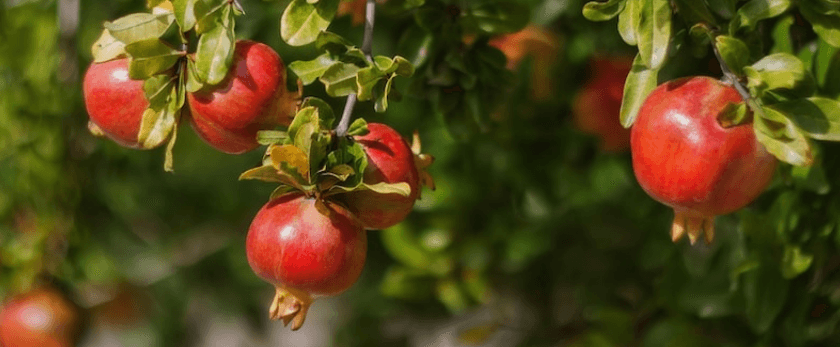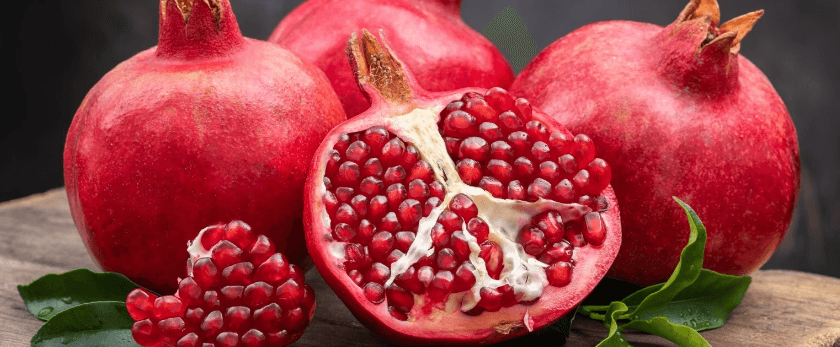Pomegranates are not only delicious and nutritious, but they also make a beautiful addition to any garden. These vibrant fruits are packed with antioxidants and have been used for centuries in traditional medicine. Plus, growing your own pomegranates is a great way to reduce your carbon footprint and promote sustainable living.
In this article, we will discuss how to care for pomegranate trees, the best time to grow them, and common problems you may encounter. By following these tips, you can successfully grow your own pomegranates and contribute to a greener, more eco-friendly world.
How to Care for Pomegranate Trees
Watering
Pomegranate trees require regular watering, especially during the first few years of growth. They prefer well-drained soil, so make sure to water deeply but infrequently. This will encourage the roots to grow deeper and make the tree more drought-resistant.
During the summer months, when the tree is actively growing, water once a week. In the winter, reduce watering to once every two weeks. Be sure to check the soil moisture before watering to avoid overwatering, which can lead to root rot.
Light
Pomegranate trees thrive in full sun, so make sure to plant them in a spot that receives at least 6-8 hours of direct sunlight per day. If you live in a hot climate, consider providing some afternoon shade to protect the tree from scorching.
Soil
Pomegranate trees can grow in a variety of soil types, but they prefer well-drained, slightly acidic soil with a pH of 5.5-7.5. If your soil is too alkaline, you can add sulfur or peat moss to lower the pH. It's also a good idea to add organic matter, such as compost, to improve soil structure and provide essential nutrients.
Fertilizer
Pomegranate trees are not heavy feeders, but they do benefit from regular fertilization. Use a balanced fertilizer, such as a 10-10-10, in the spring and summer. Avoid fertilizing in the fall, as this can stimulate new growth that may be damaged by winter frost.
Pruning
Pruning is essential for maintaining the health and shape of your pomegranate tree. It's best to prune in late winter or early spring before new growth appears. Remove any dead, damaged, or diseased branches, as well as any suckers that grow from the base of the tree.
You can also prune to shape the tree and promote better fruit production. Remove any crossing branches or branches that are growing towards the center of the tree. This will improve air circulation and sunlight penetration, which can help prevent diseases.

What is the Best Time to Grow Pomegranates?
Pomegranates are typically grown in warm, dry climates, but they can also be grown in cooler regions with proper care. The best time to plant pomegranate trees is in the spring, after the last frost has passed. This will give the tree enough time to establish its roots before the hot summer months.
If you live in a colder climate, you can still grow pomegranates by choosing a cold-hardy variety and providing protection during the winter. Pomegranate trees can survive temperatures as low as 10°F (-12°C) with proper care.
Common Problems with Pomegranates
Pomegranates are relatively easy to grow, but they can still face some common problems. Here are a few issues you may encounter and how to address them:
- Pests: Pomegranates are susceptible to pests such as aphids, mealybugs, and scale insects. You can control these pests by using natural methods, such as spraying the tree with a mixture of water and dish soap or introducing beneficial insects like ladybugs.
- Diseases: Pomegranates can also be affected by diseases such as fungal infections and bacterial blight. To prevent these diseases, make sure to provide good air circulation and avoid overwatering. If your tree does get infected, remove the affected branches and treat with a fungicide.
- Fruit Splitting: Pomegranates may split open when they are ripe, which can be caused by fluctuations in watering or temperature. To prevent this, make sure to water consistently and provide some shade during hot weather.
- Fruit Drop: Pomegranates may also drop their fruit prematurely, which can be caused by stress or lack of nutrients. Make sure to provide adequate water and fertilizer to prevent this issue.
Conclusion
Growing pomegranates is a rewarding experience that not only provides you with delicious fruits but also contributes to a more sustainable lifestyle. By following these tips, you can successfully grow your own pomegranates and enjoy the many benefits they offer. Remember to care for your tree responsibly and dispose of any waste in an eco-friendly manner to promote a greener, more sustainable future. Happy gardening!










